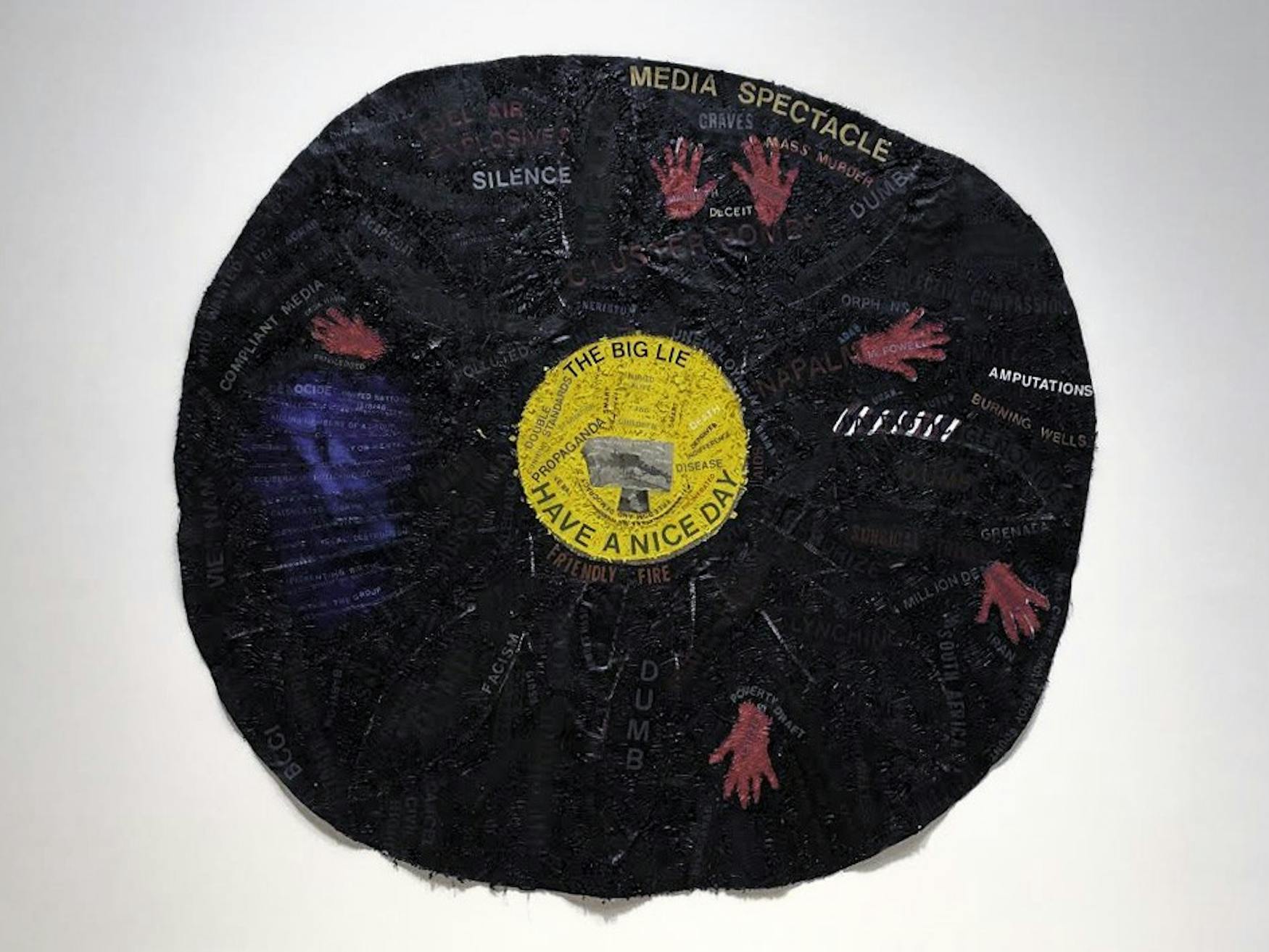JustArts Spotlight one the Rose
Howardena Pindell’s “‘Till Brinam Wood Removes to Dunsinane’ (Macbeth, Act 5, Scene 3)” (1991) effectively draws the audience’s attention, first focusing their eyes on the yellow center where the large text “Have A Nice Day” starkly contrasts with the smaller words “propaganda,” “death” and “double standards” surrounding it. Throughout the work, Pindell uses the same technique of eye-catching contrasts. In the black background, bright, blood-red handprints break up the blackness and draw the public’s eye to certain words neighboring them. Phrases like “Full Air Explosives,” painted in red, appear next to words like “Silence,” written completely in white. Here, a word with loud and destructive connotations appears next to “Silence,” the result of destruction, implying a lack of life.
Pindell layers the contrast not only in her choice of colors but also in their specific placement. Though the words and phrases are individual, they each relate to ones close by. There are no full sentences, but the manner in which she formats her art causes the viewer to read the words consecutively so that, in a way, a narrative forms. As your eyes follow the circular outline away from “Silence” and “Explosive,” you see “Mass Murder” and “Media Spectacle” but then you are immediately drawn to “orphans” next to a read handprint and the white stripes behind “patriarchal genocide.” Each word is specifically chosen for its potential shock value and ability to create powerful images in your mind. Her expert use of contrasts holds your attention as even more words appear out of the blackness to catch your eye. Since no one shares the same image and word association, the experience is very individual as we connect the words and phrases into our own story. This is why “‘Till Brinam Wood Removes to Dunsinane’ (Macbeth, Act 5, Scene 3)” is so fantastic; Pindell knows how to target each person’s sensibilities.



Please note All comments are eligible for publication in The Justice.